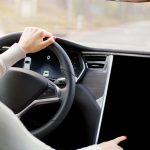Neuralink, the neurotechnology venture initiated by Elon Musk, is making strides in its endeavor to merge human cognition with digital interfaces. By continuing to advance its brain implant technology, the company aims to offer new horizons for individuals with severe physical impairments. The latest developments underscore Neuralink’s ongoing commitment to enhancing human-computer interaction.
Neuralink has progressively increased the number of participants in its Prime study, reflecting a methodical expansion of their clinical trials. The progression from initial cases to more comprehensive studies indicates Neuralink’s ability to navigate the complexities of human brain integration.
How Are Patients Responding to Implants?
“They’re all working well,”
Elon Musk commented in a recent live broadcast on X, affirming the stability of the implanted N1 brain-computer interfaces. The surgical procedure, facilitated by Neuralink’s robotic system, has been applied to three patients with plans for more installations this year.
What Advances Have Been Made in Device Functionality?
Post-implantation, patients such as Noland Arbaugh have demonstrated the ability to control digital devices like chess games and video applications using neural signals. Although initial issues like thread retraction occurred, Neuralink addressed these through software enhancements, restoring much of the device’s functionality.
What Are Neuralink’s Future Initiatives?
Looking forward, Neuralink is developing Blindsight, a device intended to restore vision by interfacing with the visual cortex. This project recently obtained breakthrough device designation from the FDA, facilitating expedited development for treating life-threatening conditions.
Through ongoing studies such as Convoy, which aims to extend control to assistive robotic arms, Neuralink is broadening the applications of its technology. These efforts align with the company’s broader objectives to empower individuals with quadriplegia and other disabilities through innovative neurotechnology.
Neuralink’s ongoing development of brain implants demonstrates substantial progress in neurotechnology, offering potential benefits for individuals with severe physical disabilities. The company’s focus on enhancing device durability and minimizing biological rejection is critical for long-term application. Continued research and successful implementations of projects like Blindsight could pave the way for new therapeutic treatments and improve the quality of life for many patients.










